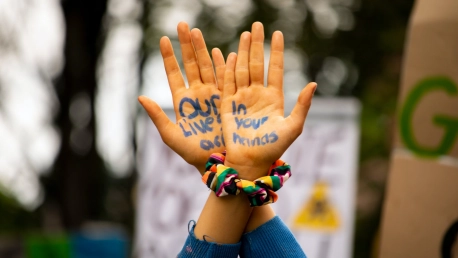As demonstrations have been overtaking some places in the world, the way people protest is also changing exponentially, with the help of new technologies and innovative strategies. Think tech-savvy approaches and creative activism methods to make users feel safer than ever before. Plus, if the latest digital technology is thriving indoors, getting outside the comfort zone is only a step away.
Protesting with the Help of Technology
Recently, Citizen app, a free tool also called the “most powerful safety app ever created,” has just recorded over 600k first-time users. It was initially launched in 2016 under the name of Vigilante, designed to make 911 more transparent by giving people a communal way to monitor crime.
How does it work? Powered by reports and a custom police radio reader, the app updates users on demonstration and law-enforcement activity as it happens. People can also submit videos and correct inaccurate information. The benefits of seeing incidents unfold and getting the real story from people on the scene, as well as the opportunity to contribute to help resolve a situation, makes 70% of Citizen users feel safe.
On the contrary, what doesn’t make them feel protected, is phones. Essential for communication, these tools still raise a good question: are signals making it easier to track their movements? The Electronic Frontier Foundation, a nonprofit defending digital privacy, free speech, and innovation, recommends enabling flight mode to prevent phones from transmitting signals to cell phone towers. The Markup is another nonprofit and a new kind of media organization, that shares guides on all the ways protestors can avoid being tracked—from muting notifications to cutting out the Touch ID.
And tech doesn’t stop here. With protestors facing both unprecedented police violence and surveillance, independent developers are keen to help people out by removing metadata from photos and pixelating images to mask users’ identities. Developers are responding after the Drug Enforcement Administration—one of the most tech-savvy government agencies—was granted the authority to “conduct covert surveillance,” with access to billions of domestic phone records, cell-site simulators, and facial recognition technology.
One of these independent developers is Everest Pipkin, who built an app (open-source, allowing anyone to download) that strips images of their metadata and lets users blur faces, making it more difficult for neural networks to reverse blurring.
Besides new apps, popular tools like Google Docs are also used for sharing information, petitions, and resources.
Protesting Against Technology
We are implementing a one-year moratorium on police use of Rekognition.
The use of technology in times of uncertainty is, of course, double-sided. One of the most recent examples comes from Amazon. In the summer of 2018, nearly 70 civil rights organizations wrote a letter to Jeff Bezos, demanding that the company stop providing facial recognition technology to governments. Its product, Rekognition, can identify people in real time by instantaneously searching databases containing tens of millions of faces.
As part of an increased focus on the role that tech companies were playing in enabling the US government’s tracking and deportation of immigrants, the letter called on Amazon to “stand up for civil rights and civil liberties” and stop targeting communities of color and violating rights.
Things are slightly changing, as Amazon, Microsoft, and IBM all announced that they would not offer face recognition APIs in their cloud platforms—to law enforcement or in general. The companies referenced current US protests around police violence. Still, this change also comes from a growing concern that machine-learning-based systems in what can be life-or-death situations might not be entirely reliable.
Much like databases today, face recognition will be used for all sorts of things in many parts of societies, including many things that don’t today look like a face recognition use case. Some of these will be a problem, but not all.
Long story short, recognition systems are on everyone’s lips nowadays and for a good reason. Once this technology has been translated into a commodity, some vendors can sell it to a police department that can use it without fully understanding it, yet reassure people that AI “can’t be wrong”.
The digital apps by which people can make assumptions about who does or who doesn’t belong in their neighborhood are quite popular. These surveillance infrastructures are created by working with police departments and involving police officers in distributing and recommending this technology to residents.
But recently, in the current protest economy, even such digital tools are reimagining their work as some of them—Nextdoor, for example, the surveillance private network for neighborhoods—announced that they are ending the Forward to Police feature after being criticized for facilitating racial profiling.
In conclusion, what matters nowadays is using technology to stay well-informed, connected, and safe during protests. And, as Fischer noted in his article, “historical events suggest that our contemporary fascination with mobile phones and social media may overestimate the importance of these technologies”.
Or is it underestimating it?









